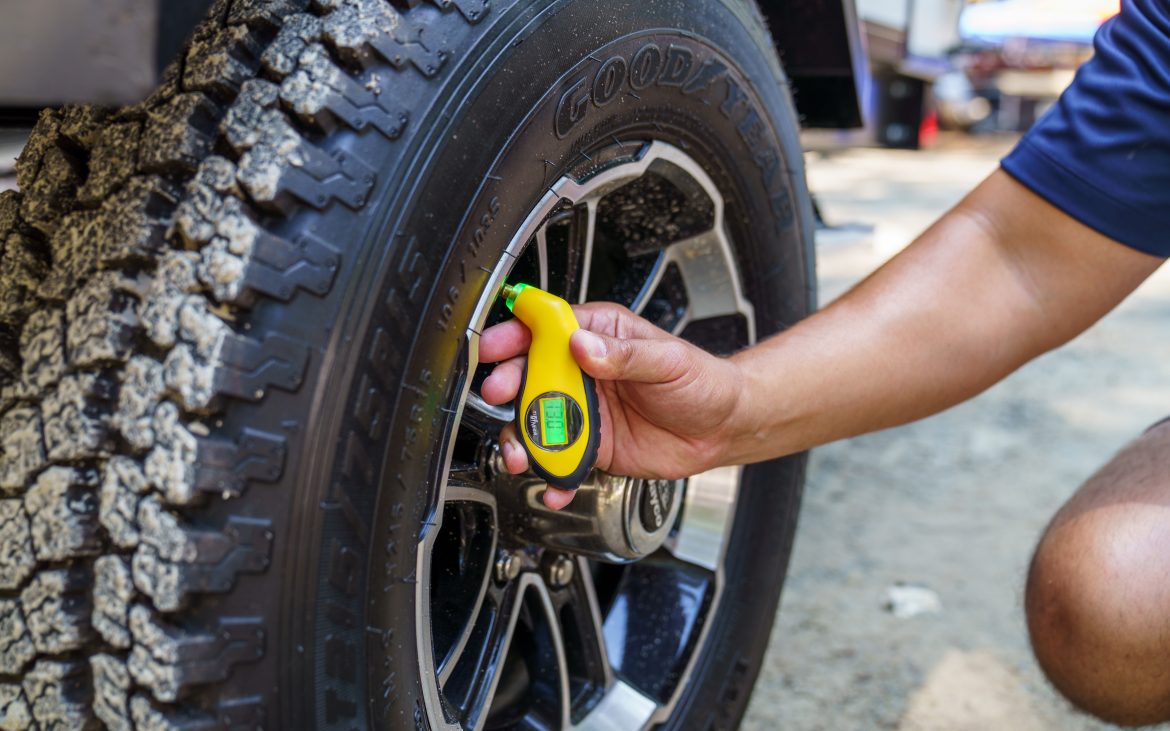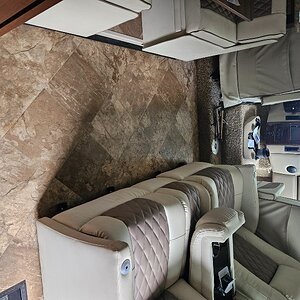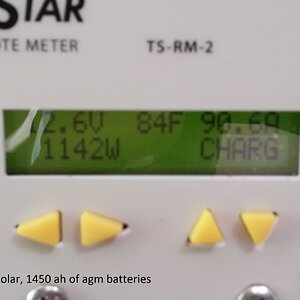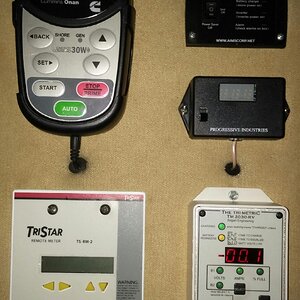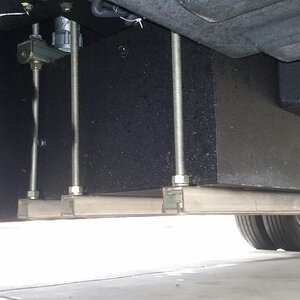Nitrogen v air!
I've used nitrogen in racing applications for decades. It does have its purpose. One of my firstclass A (long ago), a 40', had a LF tire blowout. The coach was only 3 yrs old. What I learned was, the moisture inside the tire will rotten the side wall, hence, cause the side wall blowouts.
Some service stations do not maintain their air compressors properly. Those compressors tend to introduce significant amount of moisture into your tires. You can test this by simply opening the valve on the air line and spray into the air. Those compressors that are maintained poorly, you will see a stream of moisture come out of the air hose.
For most cars and trucks that are driven on daily basis, this is not a major issue. However, for an RV that sits idle for many months, that becomes a cancer. The moisture inside the tire collects at the bottom and overtime it rusts the belts on the side from within. Eventually, you'll experience a side wall blowout.
That first blowout, was my last tire blowout. That was some 20 yrs ago. Since, I started using nitrogen. I do not replace the entire existing air inside the tire with nitro. I just use the nitro tank to add air when needed. There is no reason to replace the entire air volume, unless you plan to race that vehicle. The idea is to avoid introducing more and more moisture into the tire for a vehicle that tends to sit idle for long periods of time.
The tanks that I use cost about $50 to replace/refill. I don't recall how much it cost to purchase the original tank. Its a 5' tank. Without using it for racing it lasts me about 3 yrs. That covers the 8 tires for the motorhome, 4 for the personal car and 4 for the tandem axle trailer in tow.. With that approach, I have never had any more tire blowouts, and my rv tires last 8-9 years without any issues. Attached is the drive axle tires which were just shy of 7 yrs old and more than 70k. If you look close, you'll see there is very little thread left in them. Unlike my previous units which were kept in a climate control barn, this one was outside the entire time and with exposure to extreme hot andextreme cold.
Btw, those drive axle tires worn out much sooner that I expected them. Thats was due to the defective tag axle which could not be aligned properly, hence causing excess wear on the drive axle tiers as well. The drive axle was originally slightly outof alignment due to faulty freightliner alignment procedures, otherwise, those michelin's should have lasted well into 80-90kmiles.
With a little proper care, the RV tires can last as long as they are designed to be used. Also, anapplication of 303 twice a year, seemed to help.
